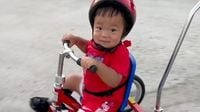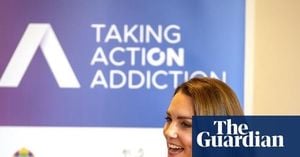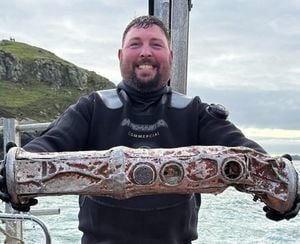Three-year-old Oliver Chu, a lively boy from California, is at the heart of a medical breakthrough that could change the course of a devastating rare disease. Diagnosed with Hunter syndrome—a genetic disorder that affects roughly one in 100,000 boys worldwide—Oliver has become the first person ever to receive a pioneering gene therapy that may halt the disease in its tracks. This remarkable journey, chronicled by the BBC, has captured the attention of families, doctors, and researchers around the globe.
Hunter syndrome, also known as MPSII, is a cruel condition. Children are born apparently healthy, but by age two, symptoms begin to appear: changes in physical features, joint stiffness, short stature, and, in severe cases, progressive neurological decline. The disease is often described as a form of childhood dementia. Without effective intervention, patients with the most severe form rarely live beyond their teens or early twenties. The syndrome is caused by a genetic error that prevents the body from producing iduronate-2-sulfatase (IDS), an enzyme essential for breaking down large sugar molecules. Without IDS, these sugars accumulate, causing damage throughout the body and brain.
For years, the only available treatment was Elaprase, an enzyme replacement therapy costing around $600,000 (£300,000) annually per patient. While Elaprase can slow some physical symptoms, it cannot cross the blood-brain barrier, leaving children vulnerable to cognitive decline. As Oliver’s father, Ricky, told the BBC, “When you find out about Hunter syndrome, the first thing the doctor tells you is 'Don't go on the internet and look it up because you'll find the worst cases and you'll be very, very disheartened.'” The Chu family faced the grim reality of watching both Oliver and his older brother, Skyler, live with this diagnosis.
The tide began to turn in December 2024. At the Royal Manchester Children’s Hospital, Oliver’s stem cells were harvested—a delicate process that marked the first step in a world-first gene therapy trial. Dr. Claire Horgan, a consultant pediatric hematologist, explained, “His blood is being passed through a fancy machine that is collecting a specific type of cell called stem cells which will be sent to a lab to be modified and then given back to him.” The cells were carefully packaged and sent to the Great Ormond Street Hospital laboratory in London, where the real magic would happen.
At the lab, scientists inserted a working copy of the faulty IDS gene into a hollowed-out virus shell. This shell acts as a delivery vehicle, carrying the healthy gene into the nucleus of Oliver’s stem cells. “We use the machinery from the virus to insert a working copy of the faulty gene into each of the stem cells,” Dr. Karen Buckland, lead scientist for Great Ormond Street Hospital’s Cell and Gene Therapy Service, told the BBC. “When those go back to Oliver, they should repopulate his bone marrow and start to produce new white blood cells, and each of these will hopefully start to produce the missing protein [enzyme] in his body.”
One significant innovation in this therapy is that the inserted gene is modified to help the enzyme cross the blood-brain barrier more efficiently—a crucial step for preventing the cognitive decline that so often devastates children with Hunter syndrome.
February 2025 brought infusion day, an event as tense as it was hopeful. The genetically engineered stem cells—about 125 million of them—were thawed and gently infused back into Oliver via a catheter in his chest. His mother, Jingru, held him steady as the research nurse administered the treatment. “Every time we talk about it, I want to cry because it’s just so amazing,” Jingru told the BBC. Afterward, Oliver and his mother returned to California, and the waiting began.
By May, the results were in. Oliver was not only producing the missing enzyme, but he was also able to stop his weekly enzyme infusions. The transformation was visible to everyone around him. “He’s doing really well. We have seen him progressing in his speech and mobility. In just three months, he has matured,” Ricky shared with the BBC. Jingru added, “He is so different from before the treatment, is talking a ton, and is engaging more with other children.”
The Chu family’s journey did not end there. They continue to travel to Manchester every three months for follow-up tests. In August 2025, further checks confirmed that the gene therapy was still working, and Oliver was thriving nine months post-treatment. “Before the transplant, Ollie didn’t make any enzyme at all, and now he’s making hundreds of times the normal amount,” said Professor Simon Jones, co-leader of the trial. “But more importantly, we can see he’s improving, he’s learning, he’s got new words and new skills, and he’s moving around much more easily.”
Oliver’s story is also one of perseverance and hope for families everywhere. His older brother, Skyler, who also has Hunter syndrome, is currently receiving traditional enzyme infusion therapy, which cannot protect his brain. The Chu family hopes Skyler may one day benefit from the same gene therapy that has changed Oliver’s life. “My wish upon the star is for Skyler to be able to get the same treatment,” Ricky said. “It feels like Oliver has got a reset in his life, and I want the same thing for Skyler, even though he’s a bit older.”
The journey to this breakthrough was not without setbacks. Researchers at the University of Manchester, led by Professor Brian Bigger, spent over 15 years developing the gene therapy. In 2020, a partnership with US biotech company Avrobio promised a clinical trial, but when Avrobio withdrew in 2023 due to funding issues, the trial nearly collapsed. It was saved by a £2.5 million grant from the British medical research charity LifeArc. Dr. Sam Barrell, LifeArc’s CEO, noted, “A huge challenge for the more than 3.5 million people in the UK living with rare conditions, is getting access to effective treatments—currently 95% of conditions have none.”
Today, Oliver is one of five boys from the US, Europe, and Australia participating in the trial. All will be monitored for at least two years. If the trial proves successful, the hospital and university hope to partner with a biotech firm to license the treatment, bringing hope to countless families facing rare genetic diseases.
As Oliver races around hospital rooftops, chatting and laughing, his parents remain cautiously optimistic. “We need to be careful and not get carried away in the excitement of all this, but things are as good as they could be at this point in time,” Professor Jones cautioned. For now, the Chu family is simply grateful for a future that once seemed out of reach.






